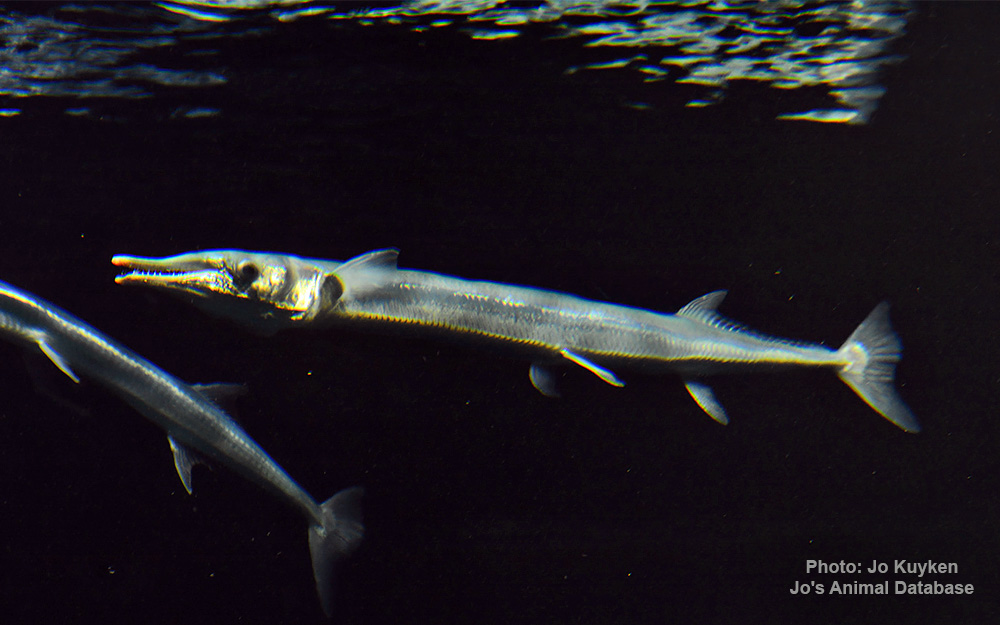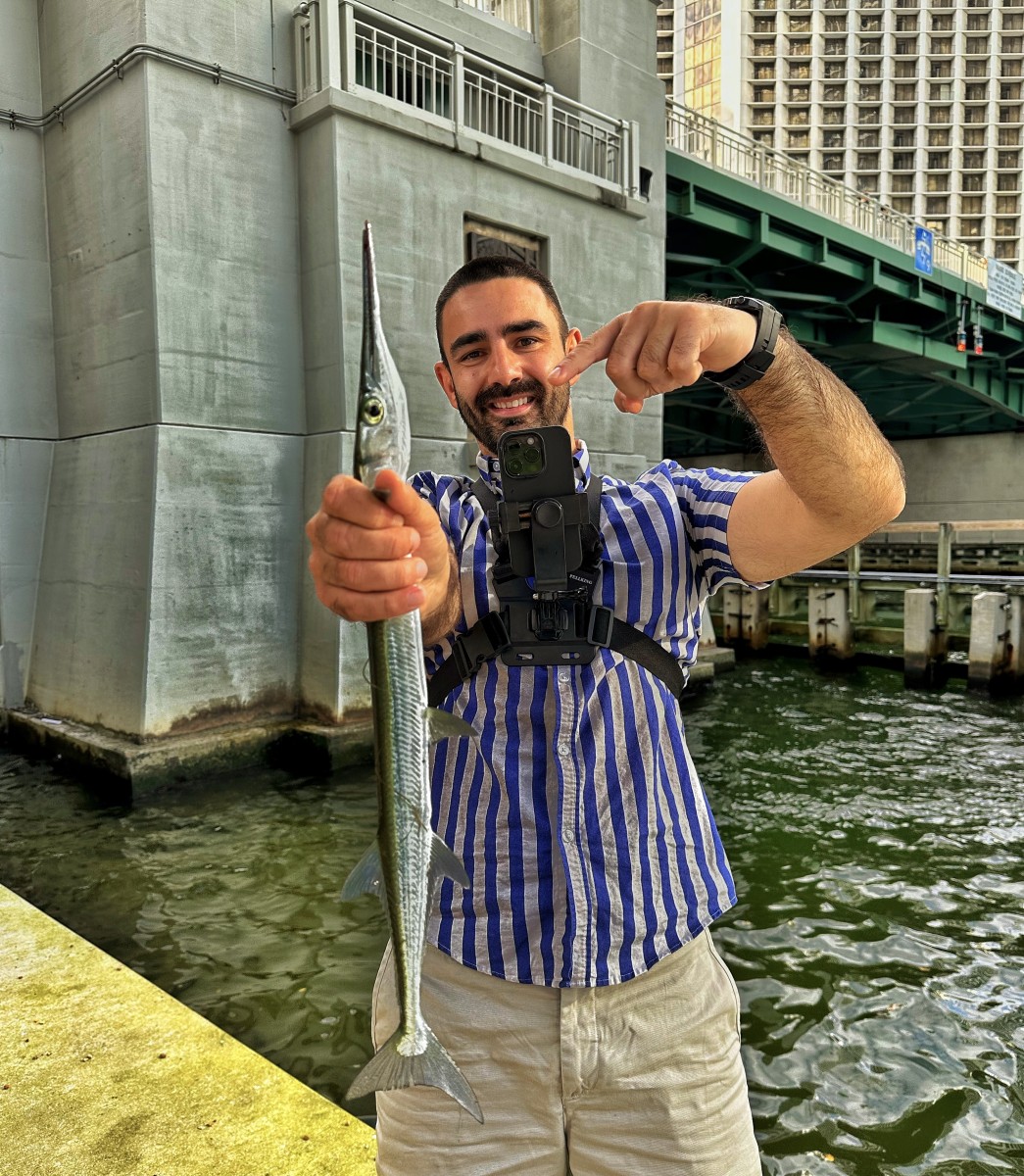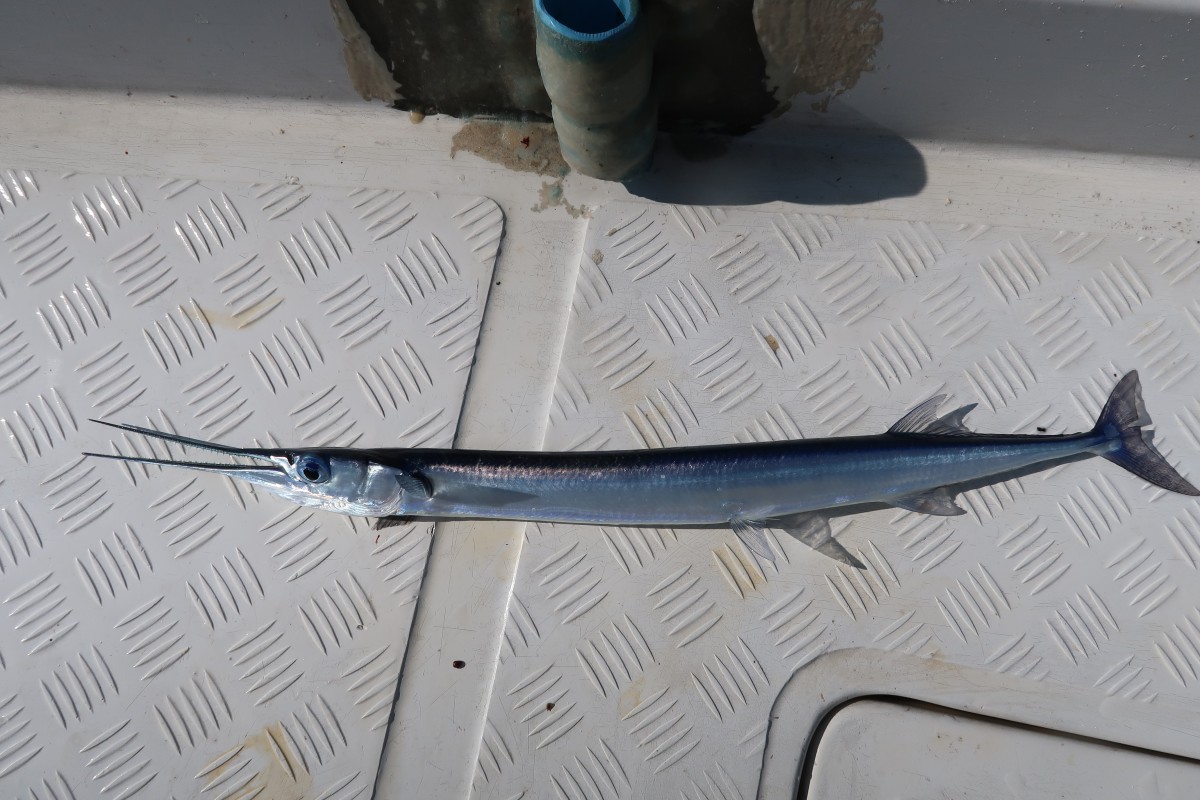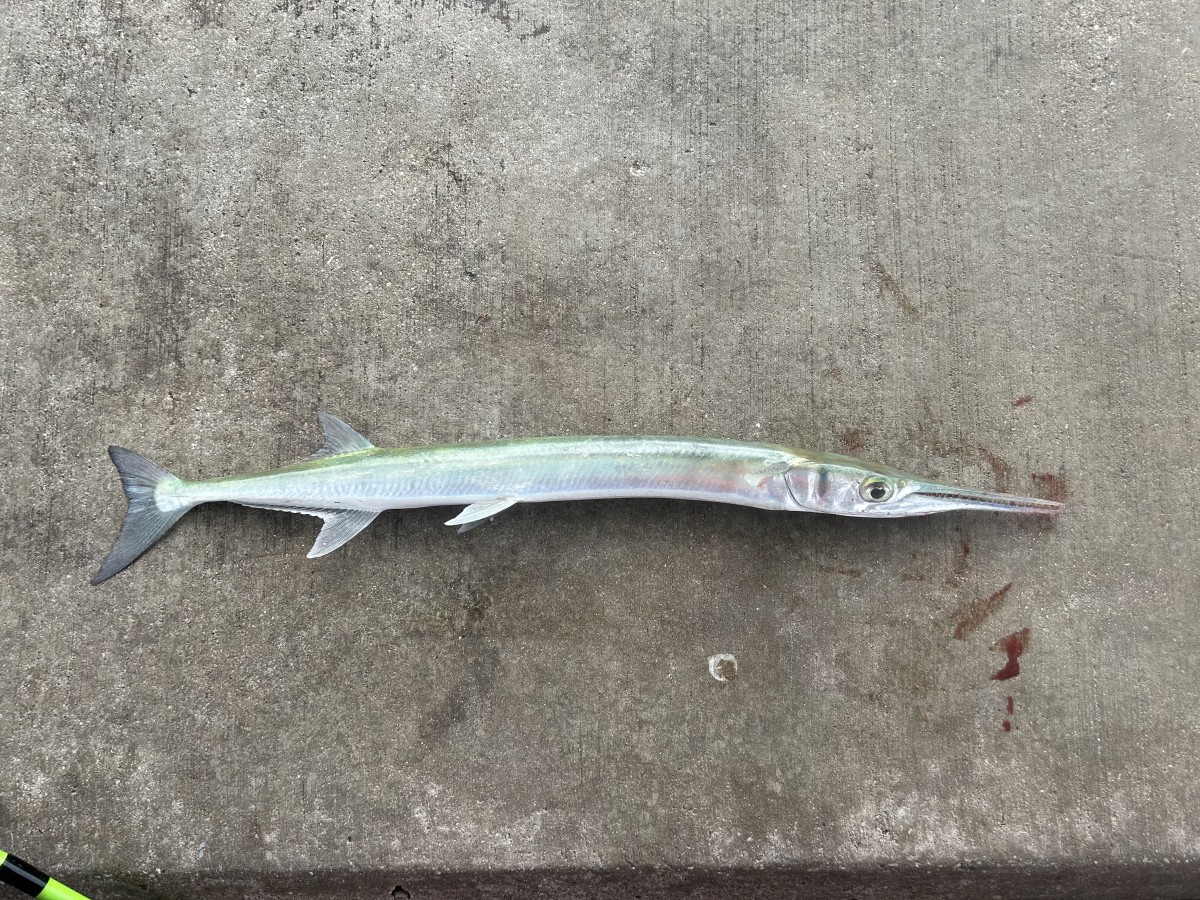Hound needlefish
(Tylosurus crocodilus)

Image source: Jo's Animal Database
Classification
General data
The houndfish (Tylosurus crocodilus) is a game fish of the family Belonidae.
It is the largest member of its family, growing up to 5 feet (1.5 m) in length and 10 pounds (4.5 kg) in weight.
It is also often called the crocodile needlefish.
While the houndfish has no spines, its dorsal fin has 21–25 soft rays, and its anal fin has 19–22.
They are also known to have 80–86 vertebrae. A key way of distinguishing the houndfish from other members of the genus Tylosurus is that the houndfishs teeth point anteriorly when the fish is a juvenile. The teeth of other species are straight at all ages.
The houndfish also has a more stout, cylindrical body and a shorter head than other needlefishes.
They have dark blue backs and silver-white sides and are plain white ventrally. A houndfish has a distinct keel on the caudal peduncle, and the caudal fin itself is
In the Indian and Pacific Oceans, houndfish are found in the Red Sea and from the coast of South Africa, east to French Polynesia, and north to Japan, and south to New South Wales, Australia. The houndfish is replaced by the Mexican needlefish, in the eastern Pacific. Houndfish are known from New Jersey to Brazil in the west Atlantic, and in the east, they are found from Fernando Poo, Cameroon, and Liberia to Ascension Island. Houndfish can also be found near Guinea, Senegal and Cape Verde. It has been recorded in the eastern Mediterranean Sea, having moved from the Red Sea via the Suez Canal as part of the Lessepsian migration.














